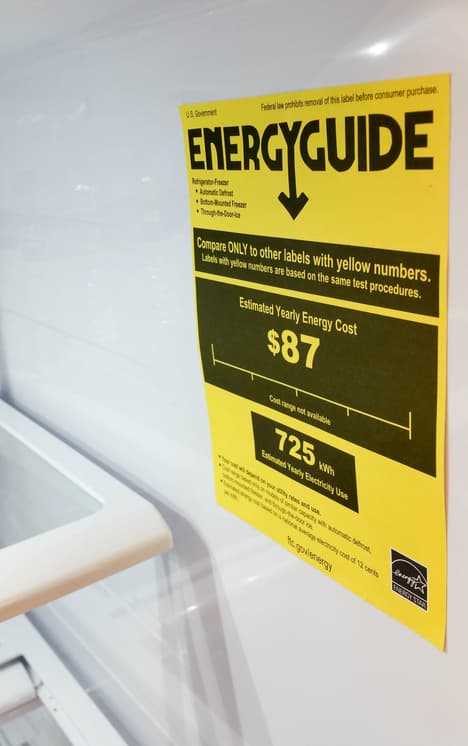
What is the ENERGY STAR label?
If you’ve ever shopped for appliances, bought a flat-screen TV, or had to replace an air conditioning system you’ve probably seen the ENERGY STAR label. The teal blue and white tag is pretty hard to miss.
But what exactly does the ENERGY STAR label represent? Is it something you really need to look for? Let’s find out!
What is ENERGY STAR?
It’s best to take a step back and first explain what ENERGY STAR is. It’s a program within the Department of Energy that’s closely associated with the Environmental Protection Agency (EPA). The purpose of the ENERGY STAR program is to identify energy-efficient products and help consumers make more informed choices that affect short-term and long-term costs.
The larger goal of the program is to reduce pollutants and greenhouse gas emissions by encouraging the use of products that don’t use more energy than necessary.
What is the ENERGY STAR label?
The ENERGY STAR label symbolizes that a product is more energy-efficient than standard comparable products. The government-backed symbol is meant to make it easy for consumers to find the most energy-efficient option. It also helps consumers calculate the long-term cost of using an appliance or device.
What the ENERGY STAR Labels Look Like
According to officials in the ENERGY STAR program, 90% of U.S. households recognize their label. It was designed to be hard to miss. The ENERGY STAR label is meant to differentiate products and is placed where it will be clearly visible.
The ENERGY STAR label is bright teal blue with white font. There’s a white arch at the top. Below that in the center of the label is the word “energy” in the lower case along with the shape of a star. At the bottom, it says “ENERGY STAR”.
The EnergyGuide Label
There is actually a second ENERGY STAR label. The bright yellow EnergyGuide label provides information on the product’s energy efficiency test results. One of the key pieces of information is the estimated annual cost to use an ENERGY STAR appliance.
How Products Earn the ENERGY STAR Label
The ENERGY STAR label isn’t put on just any product. It has to be earned by meeting strict requirements. Essentially, a product that has an ENERGY STAR label performs as well as other products, but it uses less energy. Below is a quick rundown of the major specifications.
Reduced Energy Use
The first and most important requirement is lower energy use. The specifications for what qualifies as reduced energy use is decided by the EPA. The EPA uses a number of guidelines in their decisions that include:
- The energy savings from the product needs to be nationwide.
- The energy efficiency capabilities for a product category should come from sources that aren’t proprietary and limited to a single manufacturer.
- The energy usage and performance are measurable and can be verified.
Comparable Performance
However, the product can’t sacrifice performance for energy efficiency. To earn the ENERGY STAR label a product has to use less energy while still providing the same comfort, functionality, and features as other products.
Higher Cost is Recovered
If an ENERGY STAR product costs substantially more than a comparable non-ENERGY STAR option, then the product must save the consumer enough in reduced energy use to make up the difference. And a consumer needs to be able to recoup the cost in a reasonable amount of time.
Spark Energy is committed to helping our customers and other consumers become better informed about their options and ways to use energy more efficiently. Check our blog regularly for tips on how to reduce energy use at home, choosing energy plans in a deregulated market, and the latest news about the energy sector.




